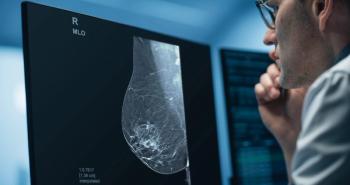
Digital mammography wins over lingering skeptics
Refresher courses are among the most popular features of the European Congress of Radiology. The program planners have developed a knack for selecting timely topics and recruiting authoritative speakers. These courses are often better attended than the more trumpeted state-of-the-art, special focus, and New Horizons sessions. Because these courses usually start at either 8.30 a.m. or 4 p.m., the congress organizers may also view them as a subtle way of ensuring that lecture halls are full throughout the day.
Refresher courses are among the most popular features of the European Congress of Radiology. The program planners have developed a knack for selecting timely topics and recruiting authoritative speakers. These courses are often better attended than the more trumpeted state-of-the-art, special focus, and New Horizons sessions. Because these courses usually start at either 8.30 a.m. or 4 p.m., the congress organizers may also view them as a subtle way of ensuring that lecture halls are full throughout the day.
An eye-catching refresher course at ECR 2005 in March was a breast session called "Open questions." The three presentations focused on technology assessment, reporting standards, and screening planning. Perhaps the most interesting aspect of the session was that it included little discussion of whether digital or analog mammography systems are clinically superior. Most observers agree that the future lies in digital technology, and purchasing trends appear to support this view. According to Greg Freiherr, business editor of Diagnostic Imaging, expenditure on full-field digital mammography (FFDM) in the U.S. was about $110 million in 2004, compared with $70 million in 2003. The investment in film-based units was $11 million during the first half of 2004, and analog mammography sales fell by approximately 40% in 2004 compared with 2003.
Digital systems produce lower radiation dose and, generally, lower recall rates. Faster patient throughput permits better scheduling and reduces waiting time. Algorithms that process the digital data should enable radiologists to focus on specific findings, and digital is more easily integrated with a computer-assisted diagnosis program.
On the negative side, FDDM has so far failed to improve cancer detection rates, and reading times tend to be slightly longer than with conventional systems, often due to workstation design. Also, large data files create problems, and the frequent need to refer to previous analog examinations can adversely affect workflow. Vendors are addressing these issues, however, and remain confident about solving them.
In this month's cover story, radiologists at one of Europe's leading cancer institutions explain how contrast-enhanced digital mammography combines the benefits of contrast-enhanced imaging with those of FFDM. Their findings may help to win over even the most ardent skeptics.
A wealth of original research and valuable educational information was presented at the ECR, and we look forward to bringing you a selection of the best material in the next two issues. Much of the news section in this issue is devoted to the Vienna congress, and our next edition will include a dedicated supplement compiled by special projects editor Jane Lowers. If you have not already done so, please visit our archived ECR Webcast at diagnosticimaging.com
Newsletter
Stay at the forefront of radiology with the Diagnostic Imaging newsletter, delivering the latest news, clinical insights, and imaging advancements for today’s radiologists.



























